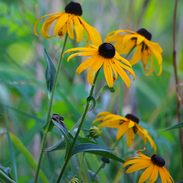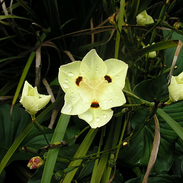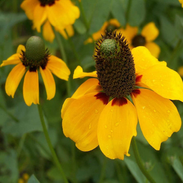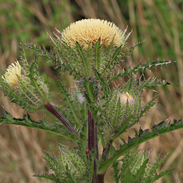With its vibrant blue flowers and captivating spiral shape, Blue Curls (Trichostema spp.) is a striking wildflower native to North America. But this beauty is more than just a feast for the eyes – it also boasts a rich history of medicinal use, particularly among Native American tribes. Let's delve into the healing potential hiding within these mesmerizing blooms.
Traditional Uses:
Respiratory Relief: Blue Curls has traditionally been used to address various respiratory ailments, including coughs, colds, asthma, and bronchitis. This is likely due to its expectorant and anti-inflammatory properties.
Pain Management: Some tribes utilized Blue Curls to alleviate headaches, rheumatic pain, and menstrual cramps, suggesting potential analgesic and anti-inflammatory effects.
Gastrointestinal Aid: It has been used to soothe digestive issues such as diarrhea, stomachaches, and nausea, possibly due to its antispasmodic and carminative properties.
Anti-anxiety and Sedative: Some traditional uses involved calming anxiety and promoting sleep, hinting at potential relaxant effects on the nervous system.
Wound Healing: Blue Curls may have been used topically to aid in wound healing, possibly due to its astringent and antimicrobial properties.
Potential Properties & Modern Research:
While scientific research on Blue Curls is still limited, some studies support its traditional uses:
Anti-inflammatory: Studies have identified compounds in Blue Curls with anti-inflammatory activity, which could explain its use for respiratory issues, pain, and gastrointestinal problems.
Antioxidant: The plant contains antioxidants, which may protect cells from damage and contribute to overall health.
Antibacterial and Antifungal: Some research suggests that Blue Curls may possess antibacterial and antifungal properties, supporting its potential use for wound healing and infections.
Cautions and Considerations:
Species Variation: The genus Trichostema includes various species with potentially differing properties. Ensure proper identification before use.
Allergies: As with any plant, some individuals may be allergic to Blue Curls.
Pregnancy and Breastfeeding: Pregnant and breastfeeding women should avoid using Blue Curls due to a lack of safety data.
Drug Interactions: Limited information exists on potential drug interactions, so consult with a healthcare professional if you are taking any medications.
Sustainable Harvesting: If you plan to wildcraft Blue Curls, ensure you do so sustainably and with respect for the environment.
The Future of Blue Curls:
As interest in natural remedies grows, Blue Curls holds promise for future research. Further scientific investigation is needed to fully understand its therapeutic potential, identify active compounds, and develop safe and effective applications.
Disclaimer: This blog post is for informational purposes only and should not be considered medical advice. Always consult with a qualified healthcare professional before using any herbal remedies.













